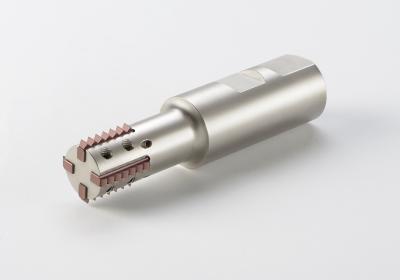
Featuring multiple straight flutes designed for machining longer threads in small to large diameters, Carmex Precision Tools Slim MT inserts and toolholders deliver high productivity for a lower price. Constructed of an advanced carbide and coating combination for extended tool life, most of the inserts are double sided. The toolholders are
nickel-coated for high wear resistance and feature a unique clamping mechanism.
Jim White, national sales manager for Carmex USA, said, “The new Slim MT line was developed to offer customers a quality tool for generating longer threads in an economic package. The longer inserts not only make deep-hole threading easier but deliver an excellent finish with less cycle time. Slim MT holders and inserts are available in a wide variety of sizes and multiple international configurations.”
Contact Details
Related Glossary Terms
- flutes
flutes
Grooves and spaces in the body of a tool that permit chip removal from, and cutting-fluid application to, the point of cut.
- threading
threading
Process of both external (e.g., thread milling) and internal (e.g., tapping, thread milling) cutting, turning and rolling of threads into particular material. Standardized specifications are available to determine the desired results of the threading process. Numerous thread-series designations are written for specific applications. Threading often is performed on a lathe. Specifications such as thread height are critical in determining the strength of the threads. The material used is taken into consideration in determining the expected results of any particular application for that threaded piece. In external threading, a calculated depth is required as well as a particular angle to the cut. To perform internal threading, the exact diameter to bore the hole is critical before threading. The threads are distinguished from one another by the amount of tolerance and/or allowance that is specified. See turning.
- wear resistance
wear resistance
Ability of the tool to withstand stresses that cause it to wear during cutting; an attribute linked to alloy composition, base material, thermal conditions, type of tooling and operation and other variables.







